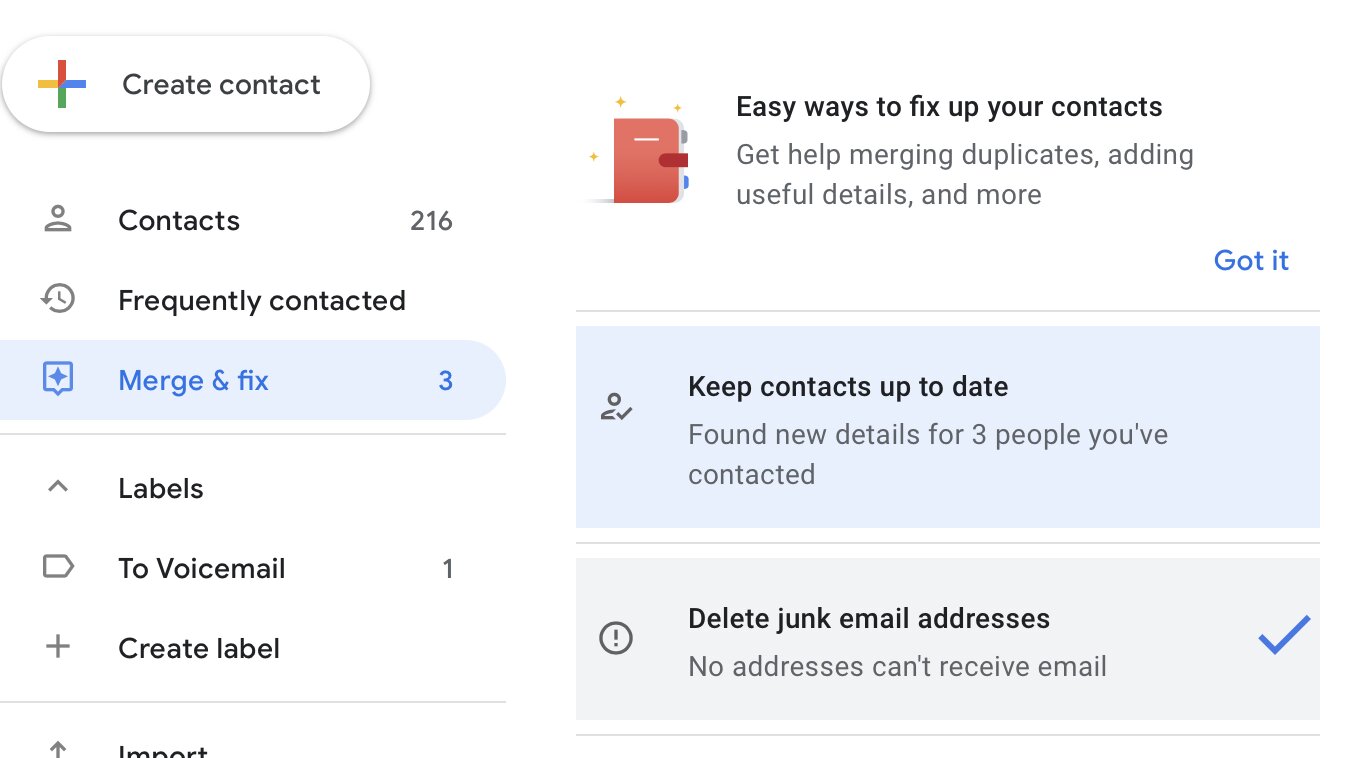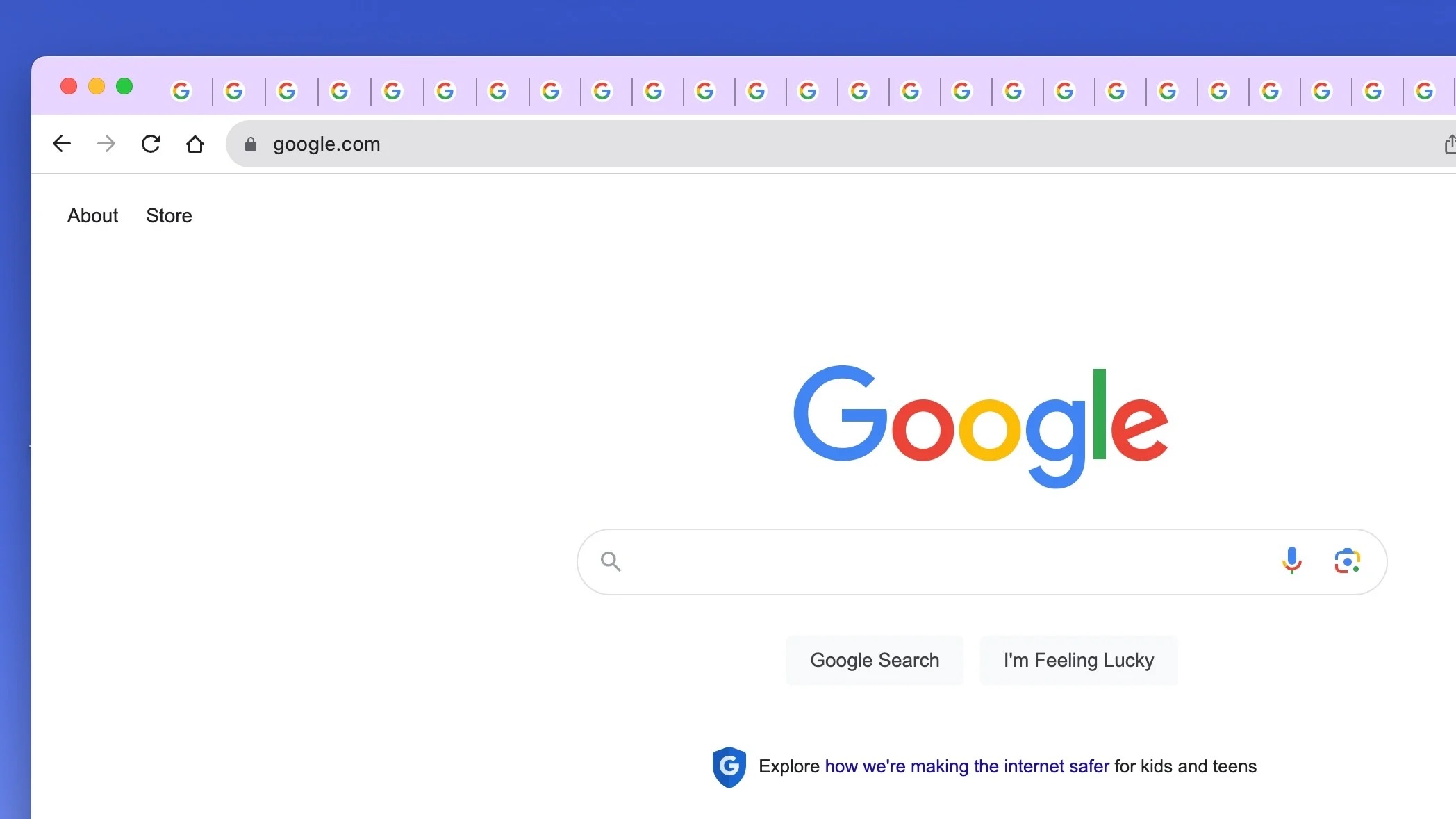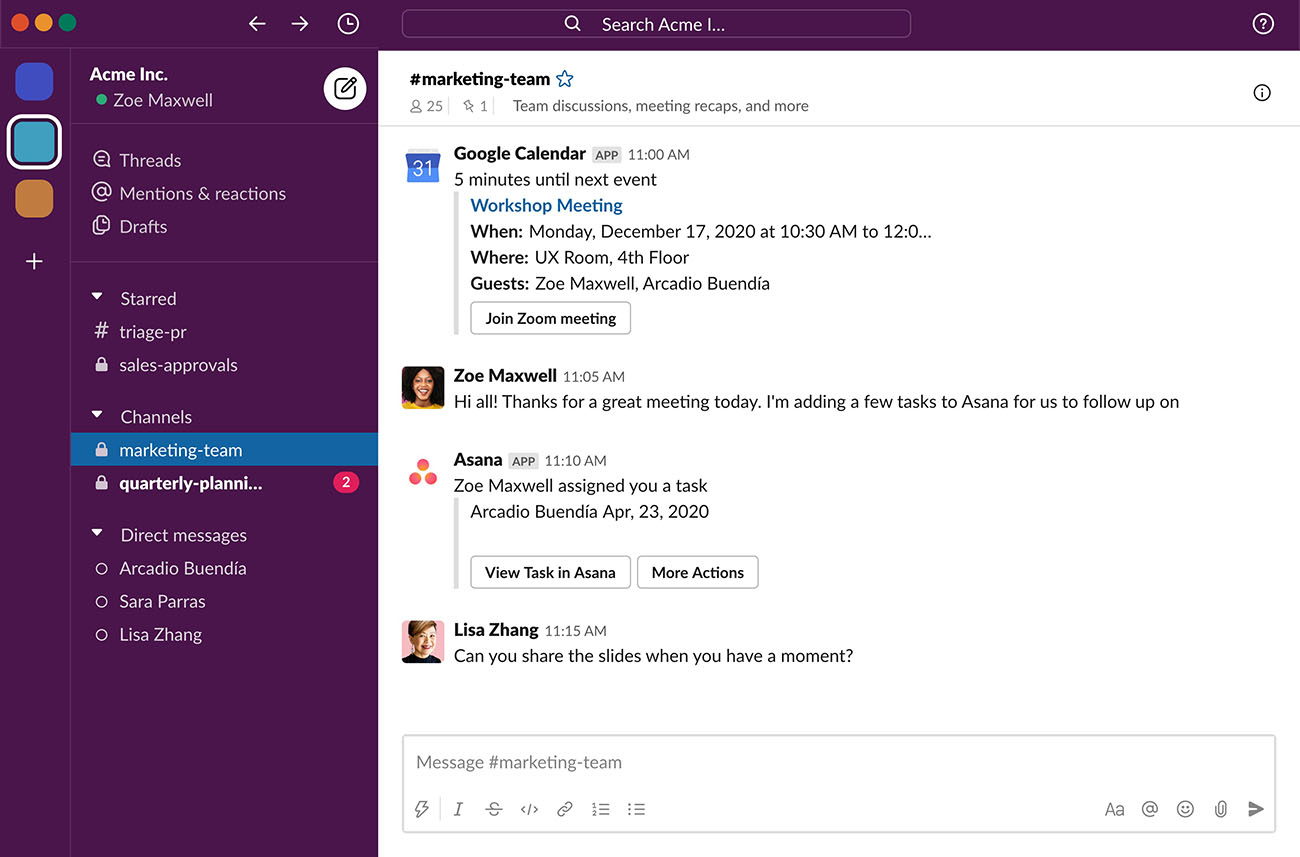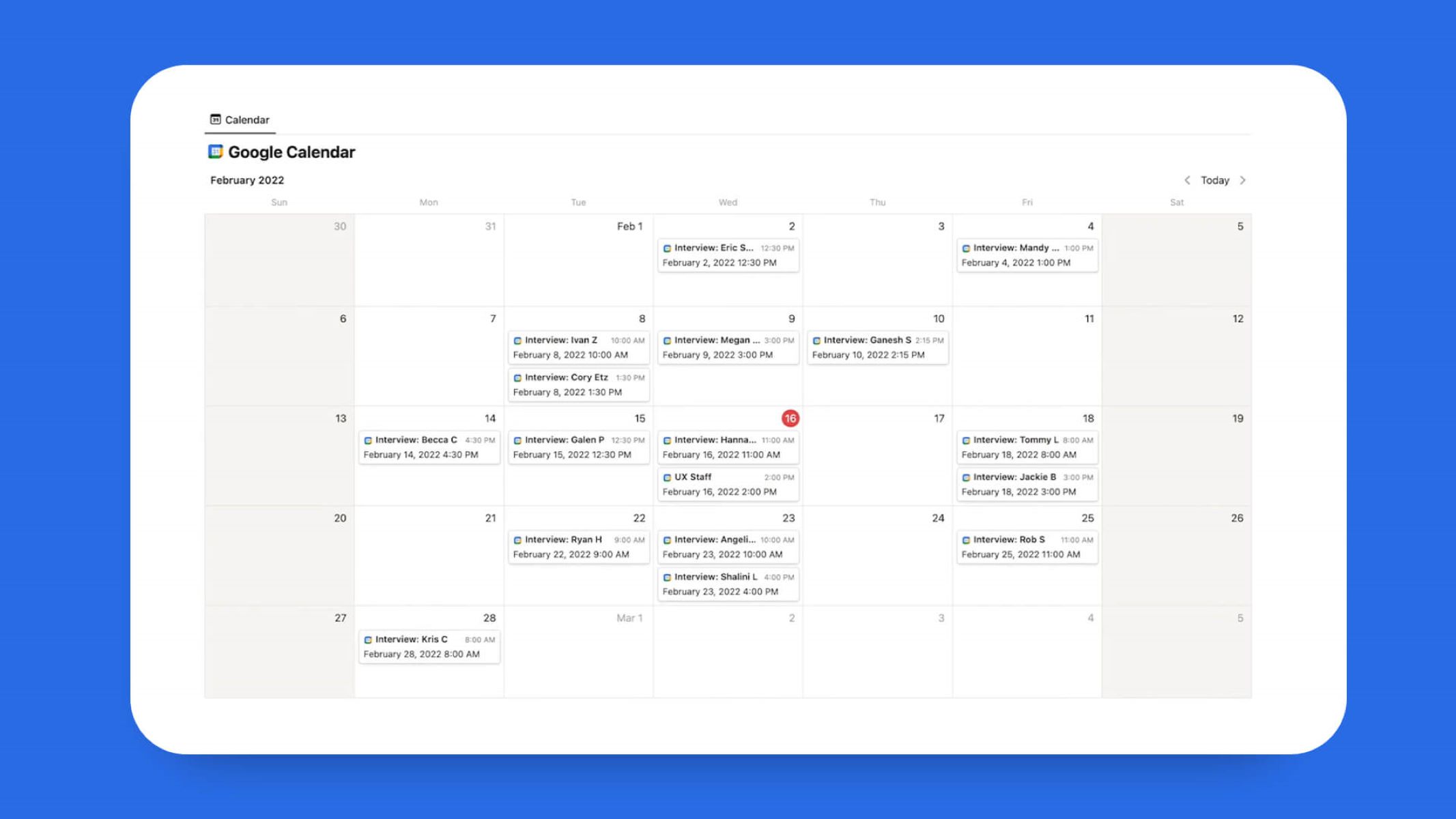Introduction
Google Workspace has become an indispensable suite of productivity tools for businesses and individuals alike. It offers various features such as email, collaboration tools, file storage, and more. However, there may come a time when you need to merge multiple Google Workspace accounts into one. Whether it’s due to business consolidation, organization restructuring, or personal preference, merging accounts can streamline your operations and improve efficiency.
In this article, we will guide you through the process of merging Google Workspace accounts, step by step. You will learn how to transfer data, migrate users, and ensure a smooth transition between accounts. By following these instructions, you”ll be able to consolidate your accounts and benefit from a unified and streamlined Google Workspace experience.
Before we dive into the details, it’s important to note that merging Google Workspace accounts requires careful planning and execution. It’s crucial to have a clear understanding of the process and follow the steps in the correct sequence. Additionally, make sure to communicate the changes to your users and provide them with any necessary instructions for a seamless transition.
Now, let’s explore the reasons why you might need to merge Google Workspace accounts and the prerequisites you should keep in mind.
Why Merge Google Workspace Accounts?
Merging Google Workspace accounts offers numerous benefits for both businesses and individuals. Let’s explore some of the most compelling reasons why you might consider merging your Google Workspace accounts:
Consolidate Data and Resources: By merging multiple accounts, you can centralize all your important data and resources in one place. This eliminates the need to switch between different accounts and simplifies access to files, emails, and collaboration tools. It allows for better organization and efficiency in managing your digital assets.
Streamline Communication and Collaboration: Having multiple accounts often leads to scattered communication channels and fragmented collaboration. By merging accounts, you can unify your communication and collaboration tools, ensuring that everyone is on the same platform. This promotes better teamwork, reduces confusion, and enhances productivity.
Cost Optimization: When you have multiple Google Workspace accounts, you may be paying separate subscription fees for each account. By merging accounts, you can potentially reduce costs by consolidating subscriptions and taking advantage of volume discounts. This can result in significant savings, especially for businesses operating at scale.
Enhanced Security and Control: Managing multiple accounts increases the complexity of security measures and user access controls. By merging accounts, you can strengthen your security posture by enforcing consistent security policies across all users. It also simplifies user management, enabling easier provisioning and revocation of access rights.
Improved User Experience: When users have to juggle multiple accounts, it can be frustrating and time-consuming. Merging accounts eliminates the need to remember multiple login credentials and switch between different interfaces. It creates a seamless user experience, saving time and reducing user frustration.
Future Scalability: Consolidating your Google Workspace accounts sets the stage for future scalability. As your business grows, you won’t have to worry about managing multiple accounts and transferring data between them. You can easily add new users or domains to the merged account, without the complexities and limitations of having separate accounts.
Now that you understand the benefits of merging Google Workspace accounts, let’s move on to the prerequisites that you need to consider before starting the merging process.
Prerequisites for Merging Google Workspace Accounts
Before merging your Google Workspace accounts, there are a few important prerequisites that you need to take into account. These prerequisites will ensure a smooth and successful merging process. Here are the key factors to consider:
Account Permissions: You must have administrative access to all the Google Workspace accounts that you intend to merge. Admin privileges are necessary to perform the required actions and make changes to the accounts. Make sure you have the necessary login credentials and administrative rights before proceeding.
Data Backup: It’s crucial to create a backup of all your important data from the accounts you plan to merge. This includes emails, files, contacts, calendars, and any other relevant data. Having a backup ensures that you don’t lose any critical information during the merging process. Take the time to review your data and initiate a backup process before proceeding.
Domain Ownership: You should have ownership and administrative control over the domains associated with the Google Workspace accounts you want to merge. This is essential for domain verification and DNS changes that may be required during the merging process. Ensure that you have access to the domain management settings for smooth domain verification and later DNS configuration.
Communication and User Awareness: It’s crucial to inform and educate all the users affected by the account merging process. Communicate the reasons behind the merging, the planned timeline, and any expected changes or disruptions. Provide clear instructions to users on how their accounts and data will be affected during and after the merging process. A well-informed user base will help mitigate any confusion or resistance during this transition.
Third-Party Integrations: Consider any third-party services or applications that are integrated with your existing Google Workspace accounts. Review the impact the merging process may have on these integrations and plan any necessary adjustments or reconfigurations accordingly. Ensure that the integrated services or applications will continue to function seamlessly after the accounts are merged.
Time and Resources: Merging Google Workspace accounts can be a time-consuming process, depending on the volume of data and the number of users involved. Allocate sufficient time and resources for the merging process, including planning, preparation, and execution. Consider the impact on your team’s workload and make sure they have the necessary bandwidth to handle the merging process effectively.
By considering these prerequisites, you can ensure a smooth and successful merging process for your Google Workspace accounts. With these factors in place, you are ready to proceed with creating a new Google Workspace account, which we will discuss in the next section.
Step 1: Create a New Google Workspace Account
The first step in merging your Google Workspace accounts is to create a new account that will serve as the destination for merging the existing accounts. Follow these steps to create a new Google Workspace account:
- Visit the Google Workspace website: Go to the Google Workspace website and click on the “Get Started” or “Try it Free” button to begin the account creation process.
- Select a subscription plan: Choose the subscription plan that best suits your needs. Google Workspace offers different plans with varying features and storage capacities. Consider your requirements and select the appropriate plan for your business or personal use.
- Provide your domain information: Enter the domain name you want to associate with the new Google Workspace account. This can be a new domain or an existing domain that you own. If you choose to use an existing domain, make sure you have administrative access to it.
- Create account details: Fill in the required information to create the account, including your name, desired username, and password. Make sure to choose a secure password that meets the specified criteria.
- Review and confirm: Review all the details you have provided to ensure accuracy. Double-check the domain name, account username, and other information before proceeding.
- Complete the setup: Follow the on-screen prompts to finish setting up your new Google Workspace account. This may include accepting terms of service, setting up payment details, and verifying your email address.
Once you have completed these steps, you will have a new Google Workspace account ready to be used as the destination for merging your existing accounts. In the next section, we will discuss the process of setting up domain verification for the new account.
Step 2: Set Up Domain Verification for New Account
After creating a new Google Workspace account, the next step in merging your accounts is to set up domain verification for the new account. Domain verification is necessary to prove that you own and have control over the domain associated with the new account. Follow these steps to set up domain verification:
- Access the Google Workspace Admin Console: Log in to the new Google Workspace account with your administrative credentials. This will grant you access to the Admin Console, where you can manage the account settings.
- Navigate to the Domains section: In the Admin Console, go to the “Domains” section. This is where you will find the settings related to your domain and its verification.
- Add your domain: Click on the “Add a Domain” button and enter the domain name you want to verify. Follow the prompts to proceed with the domain verification process.
- Choose the verification method: Google Workspace offers multiple verification methods, including adding a DNS TXT record, HTML file upload, or meta tag verification. Choose the method that is most convenient for you and follow the provided instructions.
- Verify the domain: Depending on the chosen verification method, you will need to perform the necessary actions to verify the domain. This may involve modifying DNS records, uploading files to your website, or adding meta tags to your website’s HTML code.
- Confirm domain verification: Once you have completed the verification steps, go back to the Admin Console and click on the “Verify” button to confirm that the domain verification is successful. Google will check the verification status and confirm if the domain has been successfully verified.
By completing these steps, you have successfully set up domain verification for your new Google Workspace account. This ensures that you have rightful ownership and control over the domain associated with the account. In the next section, we will discuss how to transfer data from your old accounts to the new account.
Step 3: Transfer Data from Old Account to New Account
Now that you have created a new Google Workspace account and set up domain verification, it’s time to transfer the data from your old accounts to the new account. Follow these steps to ensure a smooth and seamless transfer of your data:
- Emails: Start by transferring your emails from the old accounts to the new account. You can do this by enabling email forwarding in your old accounts, which will automatically forward all incoming emails to your new account. Additionally, you can use the IMAP or POP functionality to import your old emails directly into the new account. Make sure to disable email forwarding once the transfer is complete.
- Contacts: Export the contacts from your old accounts and import them into the new account. Most email clients and contact management software have the option to export contacts in a standard format (such as CSV or vCard), which can then be imported into the new account. Ensure that all your contacts are successfully transferred and organized in the new account’s contact management system.
- Calendars: If you have important events and appointments stored in the calendars of your old accounts, export them and import them into the new account’s calendar system. Most calendar applications support the export and import of calendar data. Verify that all your events and schedules are accurately transferred to the new account.
- Files and Documents: Transfer your files and documents from the old accounts to the new account’s document storage system. This may involve downloading files from the old accounts and then uploading them to the new account. Alternatively, you can use the Google Drive “Transfer Ownership” feature to transfer ownership of the files to the new account. Ensure that all your important files and documents are securely transferred and accessible in the new account.
- Other Data and Settings: Depending on your specific needs and usage of the old accounts, you may have additional data and settings that need to be transferred. This can include tasks, notes, bookmarks, and various application settings. Carefully review your old accounts to identify any additional data that needs to be transferred, and find the appropriate methods to migrate them to the new account.
By following these steps, you can successfully transfer the data from your old Google Workspace accounts to the new account. This ensures that your important emails, contacts, calendars, files, and other data are consolidated into one unified account. In the next section, we will discuss how to migrate users from the old accounts to the new account.
Step 4: Migrate Users from Old Account to New Account
Once you have transferred the data from your old Google Workspace accounts to the new account, the next step is to migrate the users from the old accounts to the new account. This ensures a seamless transition for your users and allows them to access all the resources and features in the new account. Follow these steps to migrate users:
- User List: Begin by creating a comprehensive list of all the users from your old accounts that need to be migrated to the new account. Include their usernames, email addresses, and any other relevant information.
- Create User Accounts: In the new Google Workspace account, create user accounts for each user on the migration list. Assign appropriate usernames and email addresses to ensure consistency with their previous accounts.
- Migrate User Data: Transfer the data for each user from their old accounts to their respective accounts in the new account. This can include emails, contacts, calendars, and files. Use the migration tools or methods provided by Google Workspace to ensure that all user data is accurately and securely transferred to the new accounts.
- Notify Users: Inform the users about the migration process and provide them with the necessary instructions for accessing the new account. Make sure to communicate any changes in usernames, email addresses, or login procedures. Provide training or documentation if needed to help users familiarize themselves with the new account.
- User Access and Permissions: Set up appropriate user access permissions and roles in the new account, ensuring that users have the necessary rights and privileges to access the resources they require. Consider any changes or adjustments in user roles that may be necessary with the new account setup.
- Test and Troubleshoot: Conduct thorough testing to ensure that all user accounts are functioning properly in the new Google Workspace account. Monitor for any issues or conflicts that may arise during or after the migration process. Provide timely support and troubleshooting to address any user concerns or problems.
By following these steps, you can successfully migrate users from your old Google Workspace accounts to the new account. This ensures that your users can seamlessly transition to the new account and continue their work without disruptions. In the next section, we will discuss how to forward emails from the old account to the new account.
Step 5: Forward Emails from Old Account to New Account
To ensure that you don’t miss any important emails sent to your old Google Workspace accounts, it’s essential to set up email forwarding to your new account. By forwarding emails, any messages sent to your old accounts will be automatically redirected to your new account, allowing you to consolidate and manage all your emails in one place. Follow these steps to set up email forwarding:
- Access the Settings: Log in to each of your old Google Workspace accounts and navigate to the settings section. This is where you can configure email forwarding settings.
- Select “Forwarding and POP/IMAP”: In the settings menu, locate and select the “Forwarding and POP/IMAP” option. This will direct you to the email forwarding settings page.
- Enable Email Forwarding: On the email forwarding settings page, choose the option to enable email forwarding. You will be prompted to enter the email address where you want the emails to be forwarded.
- Enter New Account Email: Enter the email address of your new Google Workspace account. This is where you want your old account’s emails to be forwarded. Confirm the email address and save the changes.
- Verify Forwarding: Some email clients require you to verify the forwarding by clicking on a confirmation link sent to your new account’s email address. Follow the provided instructions to complete the verification process.
- Test Email Forwarding: To ensure that the email forwarding is working correctly, send a test email to your old account and verify that it is successfully forwarded to your new account. Check both the original and forwarded email folders to confirm delivery.
- Update Reply Settings: In your new Google Workspace account, update the reply settings to ensure that when you respond to forwarded emails, your reply uses the correct email address associated with your new account. This will help maintain consistency and avoid confusion for the recipients.
By following these steps, you can set up email forwarding to ensure that all your emails from the old accounts are seamlessly redirected to your new Google Workspace account. This eliminates the need to check multiple accounts and allows you to centralize your email management. In the next section, we will discuss how to update DNS settings for your old account.
Step 6: Update DNS Settings for Old Account
Updating the DNS settings for your old Google Workspace account is an important step in the merging process. This step ensures that any email, website, or other domain-related services associated with the old account are properly redirected to your new account. Follow these steps to update the DNS settings:
- Access Domain Management: Log in to the domain management console or control panel of the domain associated with your old Google Workspace account.
- Locate DNS Settings: Navigate to the DNS settings section and locate the specific DNS records that need to be updated. This may include the MX records, CNAME records, or other relevant records associated with email delivery, website hosting, or other domain services.
- Update MX Records: If you’re transferring email delivery from the old account to the new account, update the MX (Mail Exchanger) records in the DNS settings to point to the new Google Workspace account. This ensures that any incoming emails for your domain are directed to the correct address in the new account.
- Modify CNAME or A Records: If you have specific CNAME (Canonical Name) or A (Address) records that point to your old Google Workspace account for website hosting or other services, update these records to redirect to the new account. This ensures that all domain-related services are redirected to the appropriate resources in the new account.
- Confirm DNS Changes: After making the necessary updates to the DNS records, save the changes and allow time for the DNS changes to propagate. This process can take up to 48 hours, so be patient and double-check the changes later to ensure they are fully propagated.
- Test Domain Services: Once the DNS changes have propagated, test the domain-related services, such as email delivery, website accessibility, and other configured services. Verify that everything is functioning correctly and that all services are properly redirected to the new Google Workspace account.
- Monitor and Resolve Issues: Keep an eye on any potential issues or disruptions to domain services after updating the DNS settings. If you encounter any problems, work with your domain provider or Google Workspace support to resolve them promptly for uninterrupted domain functionality.
By following these steps, you can ensure that your old Google Workspace account’s domain-related services are accurately redirected to your new account. This guarantees a seamless transition for your users and ensures that all domain services remain accessible and functional. With these steps completed, you have successfully merged your Google Workspace accounts and consolidated your resources into one unified account.
Conclusion
Congratulations! You have successfully merged your Google Workspace accounts into one unified account. By following the step-by-step process outlined in this guide, you have consolidated your data, streamlined communication and collaboration, optimized costs, enhanced security, and improved the overall user experience.
Throughout the merging process, you have learned how to create a new Google Workspace account as the destination for merging, set up domain verification to establish ownership and control, transfer data from the old accounts to the new account, migrate users, forward emails to the new account, and update DNS settings to ensure seamless domain services redirection.
Remember to communicate the changes to your users and provide them with any necessary instructions or training to ensure a smooth transition. Monitor the new account to address any issues promptly and provide support to users during this transition period.
Now that you have a consolidated Google Workspace account, take advantage of the unified platform to drive collaboration, productivity, and efficiency. Explore the various features and tools available to you, such as Google Drive, Google Docs, Gmail, and more.
As your business or organization continues to grow, you have set a strong foundation for scalability with a single Google Workspace account. You won’t need to worry about managing multiple accounts or transferring data again in the future.
Thank you for following this guide on merging Google Workspace accounts. Enjoy the benefits of a consolidated account and make the most of the powerful productivity and collaboration tools Google Workspace has to offer!

























